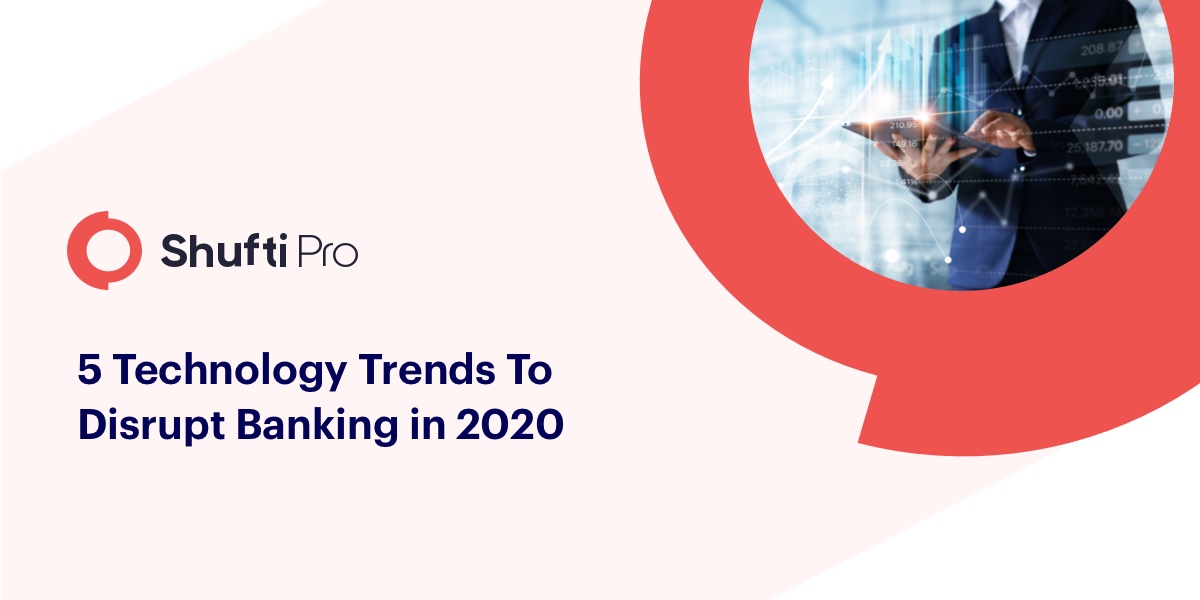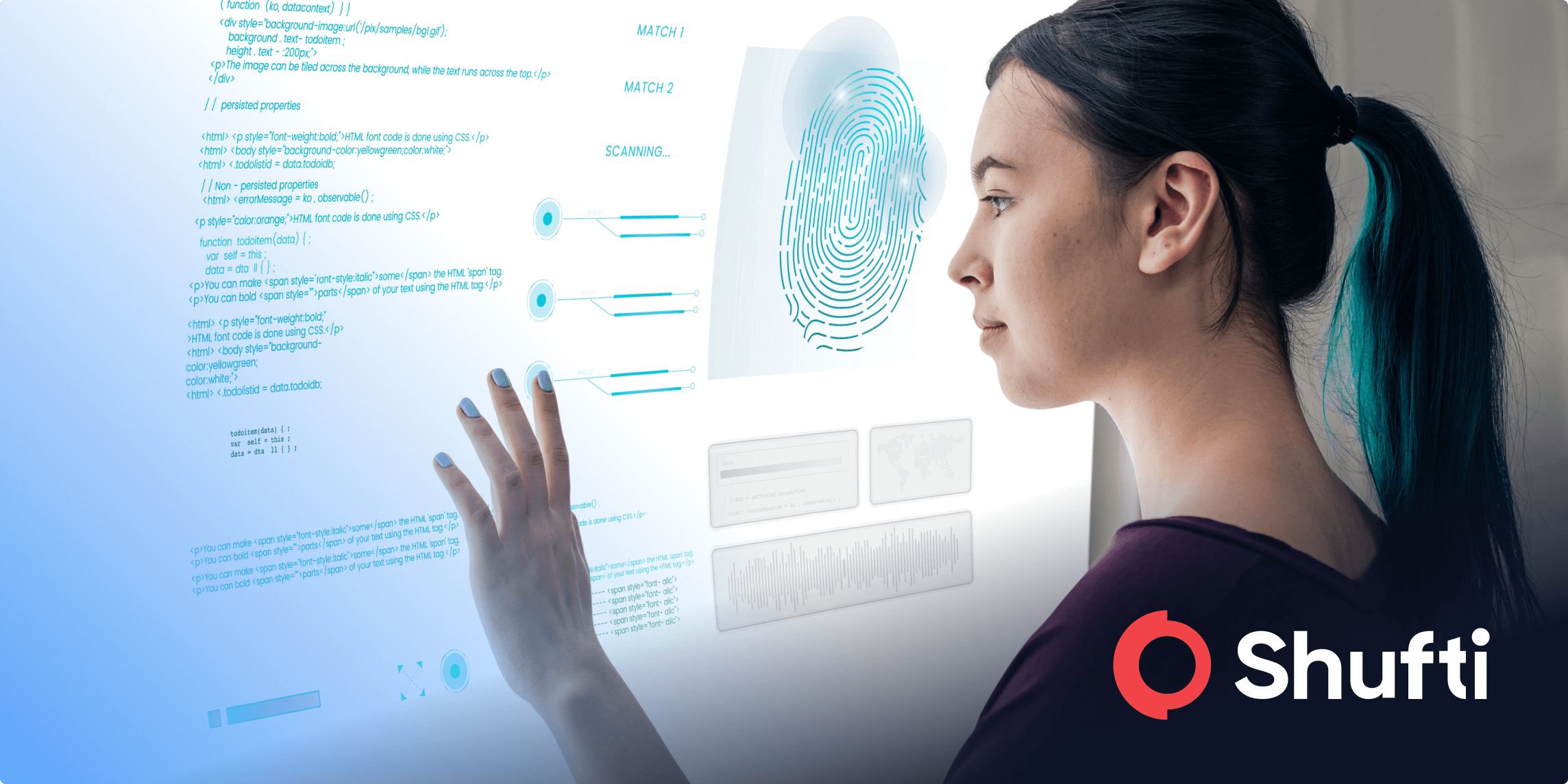5 Technology Trends To Disrupt Banking in 2020

Living in the digital era, technology is driving major changes in almost every industry. Whether it’s about introducing automation for improved business operations, enhanced cybersecurity for data protection, cloud computing for instant collaboration, data analysis for insights extraction, or personalized customer experience, technology is becoming an integral part of businesses.
The banking industry is no more of an exception. In fact, it is the most technology-driven industry in the world. Considering the rising trend of technology, more than 81% of banking CEOs are already in favor of the digitization in financial institutes – as reported by PwC study. To strive for the world of immense competition, financial institutions are proactively adopting the latest technology trends which include, but not limited to, artificial intelligence (AI), chatbots, blockchain, big data, etc.
While the businesses are competing to attract maximum customers, the only competitive edge is to keep track of the latest trends in the market and implementing them in your business in the most effective and useful way.
Here are some of the latest technology trends all set to disrupt the banking sector in upcoming years.
Artificial Intelligence
Artificial intelligence has been there for a few years now and is gradually taking over the industries. The majority of the professionals and decision-makers in financial institutes are investing in artificial intelligence as reported by PricewaterhouseCooper study. Executives and business professionals are well aware of the business advantages that AI is bringing.
The significant potential of artificial intelligence for the industry is the cost savings in business operations. As per the Business Insider Report, the cost savings in the banking sector due to the smart use of AI are expected to be $447 billion by 2023.
The financial institutes are introducing artificial intelligence technology to save costs in their three-tiered business structure, i.e. front office, middle office, and back office. The fruitful applications of AI across these bank’s offices are offering extensive cost-saving opportunities for the institutions.
The following AI use cases across the main channels of banks are enhancing the operations and providing recommendations for the financial institutes that how they can implement AI-enabled digital transformations in their organization.
Front Office (Conversational Banking)
By leveraging AI technology on the frontend, banks will continue to enhance customer identification and authentication processes seamlessly, build strong relationships with customers by providing personalized insights and recommendations. Moreover, by introducing voice assistants and chatbots, the financial institutes are able to mimic live employees, handling customer queries 24/7.
Middle Office (Anti-fraud)
With the increasing trend of the digital frauds and stringent compliance requirements by the regulatory authorities, banks are being forced to incorporate the most advanced AI technology to meet the KYC/KYB and AML compliance. In middle-office functions, AI is facilitating banks to improve their anti-money laundering (AML) and know your customer (KYC) checks to prevent payment frauds and financial crimes.
Back Office (Underwriting)
Banks have started incorporating AI solutions to improve their underwriting decisions by utilizing multiple factors that provide better transparency about the borrowers than traditional underwriting systems. It helps the institutes to assess the consumers that are considered “at-risk”.
These AI-enabled transformations exercised by banks may seem much advanced but they are revealing how to capture the opportunity efficiently. Understanding the need for a holistic AI strategy, some organizations – including Citi, JPMorgan Chase, HSBC, and U.S. Bank – are already employing AI.
Chatbots
The explosion of the internet is making processes quick and reliable by providing customers opportunities to get their work done remotely. Henceforth, in the customer-driven market, they don’t wait long to get their queries resolved and demand fast and adequate services to resolve their issues.
The invention of AI-based Chatbots has paved new roads for banks by making conversational banking more convenient and automated. Many financial institutions are using chatbots to meet dynamic user expectations while reducing costs. They are eliminating the use of traditional methods of two-way communication, i.e phone calls, emails, and physical visits.
The banks, for instance, Capital One and Bank of America, are using chatbots to resolve simple customer queries. However, with the advancement in technology, bots will not only be able to answer queries but also detect fraudulent activities, offer a financial trip and assist the customers in registration processes.
Chatbots are able to provide personalized customer experience to meet their ever-changing expectations. It facilitates banks in making smart conversations with customers eradicating the need for human customer agents, saving the cost. With the right chatbot development company, banks can provide centralized financial management and improve customer service by replacing human agents. 85% of the customer service interaction is expected to be handled by Chatbots in 2020, states Gartner.
Big Data
Moving into the fourth industrial revolution, the data-driven market is overtaking the businesses. To survive the competitive market, data analysis is the key. But with a large amount of data generated every day, it is becoming nearly impossible to extract useful information and insights. To deal with it, big data is the answer.
This technology is causing significant disruption in the banking industry by collecting and putting all the banking data in one place and processing it to get valuable information to stay ahead of competitors. The collected information includes ATM withdrawals, money transfers, debit/credit card transactions, customer data, etc.
Due to big data analytics, the banking industry is going through a major transformation. It is helping financial institutes to perform their operations in a better way. According to IDC Semiannual Big Data and Analytics Spending Guide of 2016, the investments in big data analytics totaled $20.8 billion, alone in the banking sector. It will grow in the upcoming years. Undoubtedly, big data will become a bespoke tool for banks in 2020 and beyond.
Which Areas Does Big Data Cover in the Banking Sector?
Big data is helping banks to learn about their customers and make smart decisions in real-time. It covers the following areas of banking operations:
- Uncovering customer’s spending patterns
- Identifying the significant transaction channels; i.e. card payments, ATM withdrawals, cheque withdrawals
- Customer segmentation according to their profiles (for example high risk, low-risk customers, etc.)
- Fraud prevention and management
- Product cross-selling and personalized recommendations based on customers’ segmentation
- Risk assessment, Compliance, and Reporting
- Customer feedback analysis
Blockchain
Blockchain technology is commonly known for cryptocurrency like Bitcoin. It efficiently keeps track of transactions in a verifiable way. The blockchain market is rapidly growing and is expected to reach an annual revenue of $20 billion by 2024. It explains the increasing demand for block technology across multiple industries and financial institutions is no different.
Blockchain is going to disrupt banks the same way internet disrupted media – Harvard Business Review
Blockchain will disrupt the banking sector because they are highly secure, economical and easy to operate. The adoption of this technology will rise as more financial institutions will realize how blockchain can improve the customer experience while enhancing security and reducing the cost. Due to its ease of use and transparency, blockchain will be used in banks for digital payment and currency exchange.
Blockchain technology protects the customer’s data (both personal and financial) as it acts as a decentralized database by storing all the data on multiple blockchain servers. Through blockchain, banks can eliminate the need for third parties in loan and credit processing. Moreover, blockchain makes payments more secure while reducing interest rates.
Robotic Process Automation
Businesses are dealing with voluminous data every day, which means there are high chances of human errors. Several banks, including Axis Bank and Deutsche Bank, are incorporating RPA to effectively manage business operations while reducing human errors and efforts. With the advancement in the digital world, the process turnout time is reduced from weeks to minutes and seconds, all thanks to robotic process automation.
Banks are benefitting from RPA technology, by automating their several processes. It does not only help them in minimizing errors and saving cost and human resources but also enables them to focus on customer engagement and business growth. Some of the processes include:
Know Your Customer (KYC)
Know your customer is a customer identification and verification process imposed by regulatory authorities on every financial institute. This process involves in-depth customer verification and due diligence that may require up to 1,000 Full-time equivalents (FTEs) to successfully carry out the process. Moreover, the banks spend around $384 million per year on KYC compliance.
Taking into account the resources, time and cost involved in the KYC process, banks have started incorporating digital KYC solutions – a domain of RPA. Through eKYC, financial institutes can fulfill the KYC checks in real-time, hence, improving customer experience.
Meeting Compliance
The rise in digital frauds, money laundering, and terrorist funding incidents, the compliance rules are becoming more stringent and banks are sternly obliged to comply with each of them. The applications of RPA are making it convenient for banks to comply with rules in an efficient manner.
According to Accenture’s 2016 survey, 73% of the surveyed compliance officers find RPA a key enable in compliance, in the next three years. Through RPA, productivity can be increased, henceforth improving KYC/KYB, AML, CFT compliance processes.











